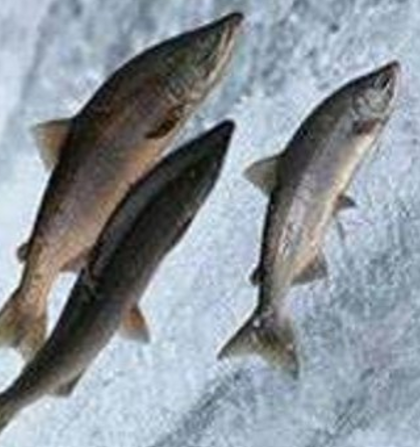Partnership Identifies Goals for Columbia River Basin Salmon Recovery
- October 19, 2020
- John Harrison

The Columbia Basin Partnership Task Force has completed nearly four years of work identifying quantitative goals for improving salmon and steelhead runs in the Columbia River Basin. Members of the task force discussed their final report with the Council at its October meeting. The Task Force will submit its report this month to NOAA Fisheries’ Marine Fisheries Advisory Committee (MAFAC), which convened the Columbia Basin Partnership Task Force in 2017.
Michael Tehan, NOAA Fisheries assistant regional director, said the Partnership Task Force provided a science-based, transparent process to develop goals for long-term conservation and fishing opportunities while supporting tribal treaty fishing rights.
The 31 Partnership Task Force members included tribes; fishing groups; agricultural interests; conservation organizations; river transportation and port representatives; hydropower interests; and the states of Idaho, Montana, Washington, and Oregon. Several Council members participated on behalf of their states, including Montana Council Member Jennifer Anders, who also represented the Salish-Kootenai Tribes of Montana and the Kootenai Tribe of Idaho; Guy Norman, Washington; and Jim Yost, Idaho. Jim McKenna, of Governor Kate Brown’s Natural Resources Office, represented Oregon.
“One of the most tangible things the task force developed is the quantitative goals, which provide a common destination the task force agreed we all want to get to, even though we have different ideas about how to get there,” said Zach Penny, who represented the Columbia River Inter-Tribal Fish Commission on the Task Force.
The Partnership completed a full accounting of Columbia River salmon and steelhead numbers at the stock level from the ocean to the spawning grounds for natural and hatchery-origin fish.
The partnership agreed on qualitative goals for natural production of specific stocks of salmon and steelhead, plus harvest, hatcheries, and social, cultural, economic, and ecological considerations. Quantitative goals also were established. Currently, about 350,000 naturally spawning fish return to spawning grounds. The Task Force agreed on low, medium, and high quantitative goals for future natural production of 440,000, 1,570,000, and 2,850,000 fish. The partnership also agreed that the historical, pre-dam returns averaged about 9,450,000 fish annually.
Mike Edmondson of the Idaho Office of Species Conservation, noted that the Partnership Task Force envisions that about 75 percent of the future returns should be naturally spawning fish and 25 percent hatchery fish, the reverse of the current returns, which are mostly hatchery fish. He said the Task Force goals are not regulatory, but that “it is our hope management authorities will adopt our goals.” While it is not a fisheries manager, the Council nonetheless adopted the Task Force goals into its 2020 Addendum to its Columbia River Basin Fish and Wildlife Program.
The Task Force recognized it will take work and commitment to meet its goals for salmon and steelhead and did not set a deadline or timeline for that, but did recommend continuing the collaborative process to determine the best approaches to achieving the goals.
“There was extensive discussion about the resources this will take, and there was recognition that existing resources would not be adequate,” Tehan said. He said there were no further discussions of funding, but a recognition that there is “a need for a broader base of support for salmon in the basin.” He said this could include exploring new appropriations from Congress, but not from the Bonneville Power Administration, which funds the Council’s fish and wildlife program.
“The message of urgency was very clear coming out of the partnership, said Task Force member Rob Masonis of Trout Unlimited. “Bold action is needed now. The simple way I would put it is that as long as there is a salmon problem there is a people problem. We need to bring people together to coordinate actions and strategies across the basin – Collaboration and cross-sector problem solving. We laid a good foundation for that to happen moving forward.”
Four Northwest Governors Pledge Support For Collaboration To Advance Partnership Goals
On October 9 the governors of Idaho, Montana, Oregon, and Washington issued a statement committing to “work together to rebuild Columbia River salmon and steelhead stocks and to advance the goals of the Columbia Basin Partnership Task Force.” The statement says the states will work with Indian tribes, federal agencies, and stakeholders in a collaborative, science-based effort to develop strategies and actions.
The governors’ statement notes that “regional stakeholders” asked them to help identify “… actions and investments needed to recover harvestable salmon and steelhead populations, conserve other fish and wildlife, honor and protect tribal needs and way of life, and strengthen the electricity and agricultural services that communities rely on.”
The governors also “recognize the relevance” of federal plans and analyses for recovering Endangered Species Act-listed salmon steelhead even though “… our respective states may view the adequacy of these documents differently.” Regardless, the governors committed to the “ongoing collaboration to help achieve the Partnership’s abundance goals to uphold treaty rights, support state fishery and fishery-related objectives and river-dependent economies” and to do this with “… accountability and transparency, and full opportunity for analysis and discussion of key regional issues relating to salmon and steelhead abundance and opportunities for advancing Partnership objectives, both short term and long-range.”



